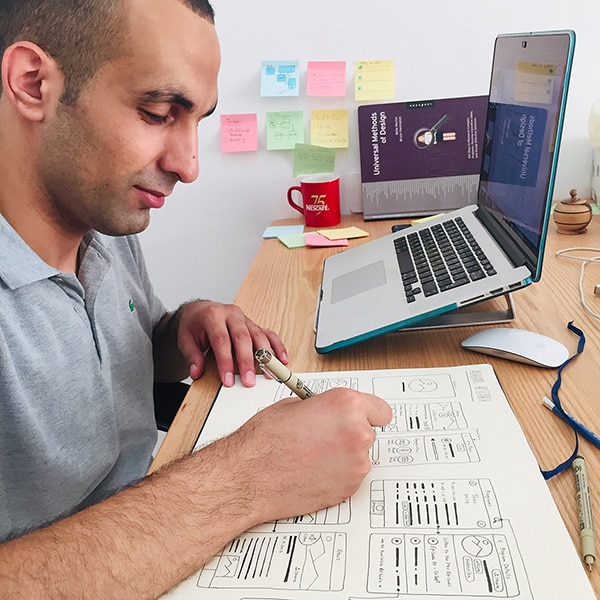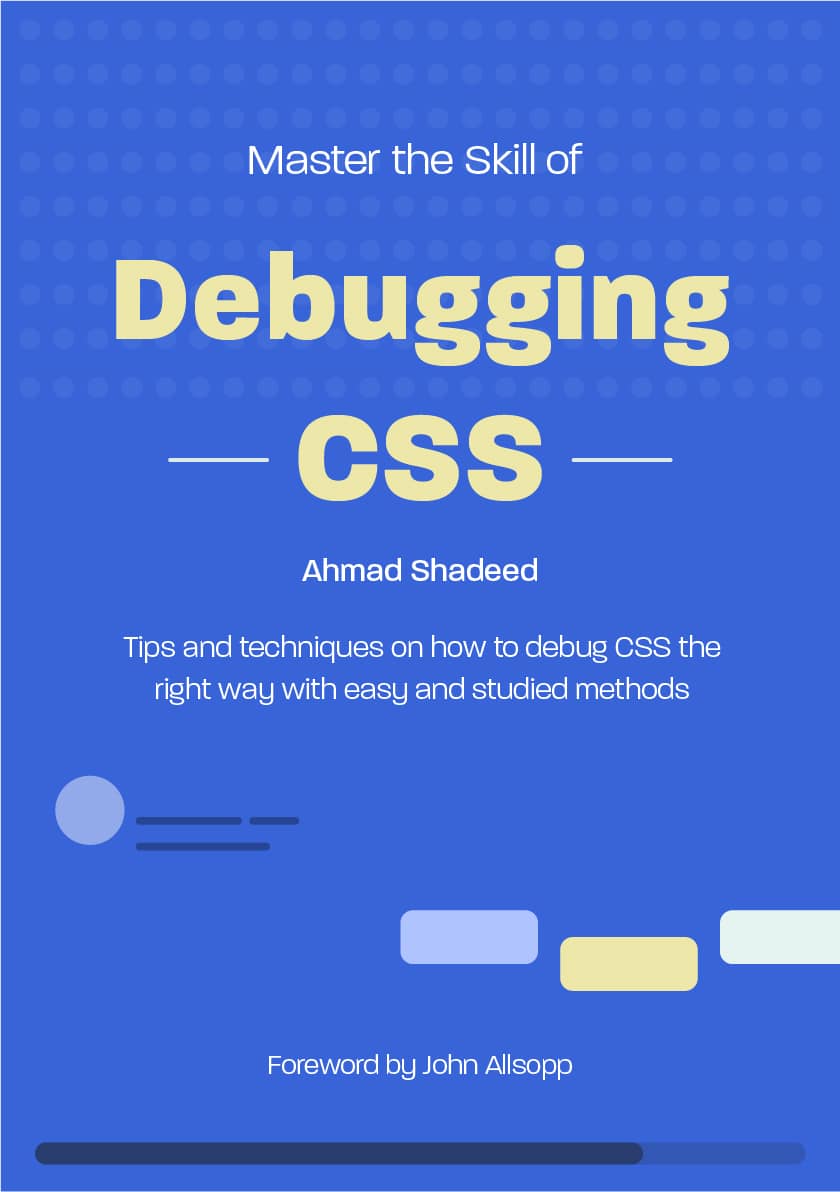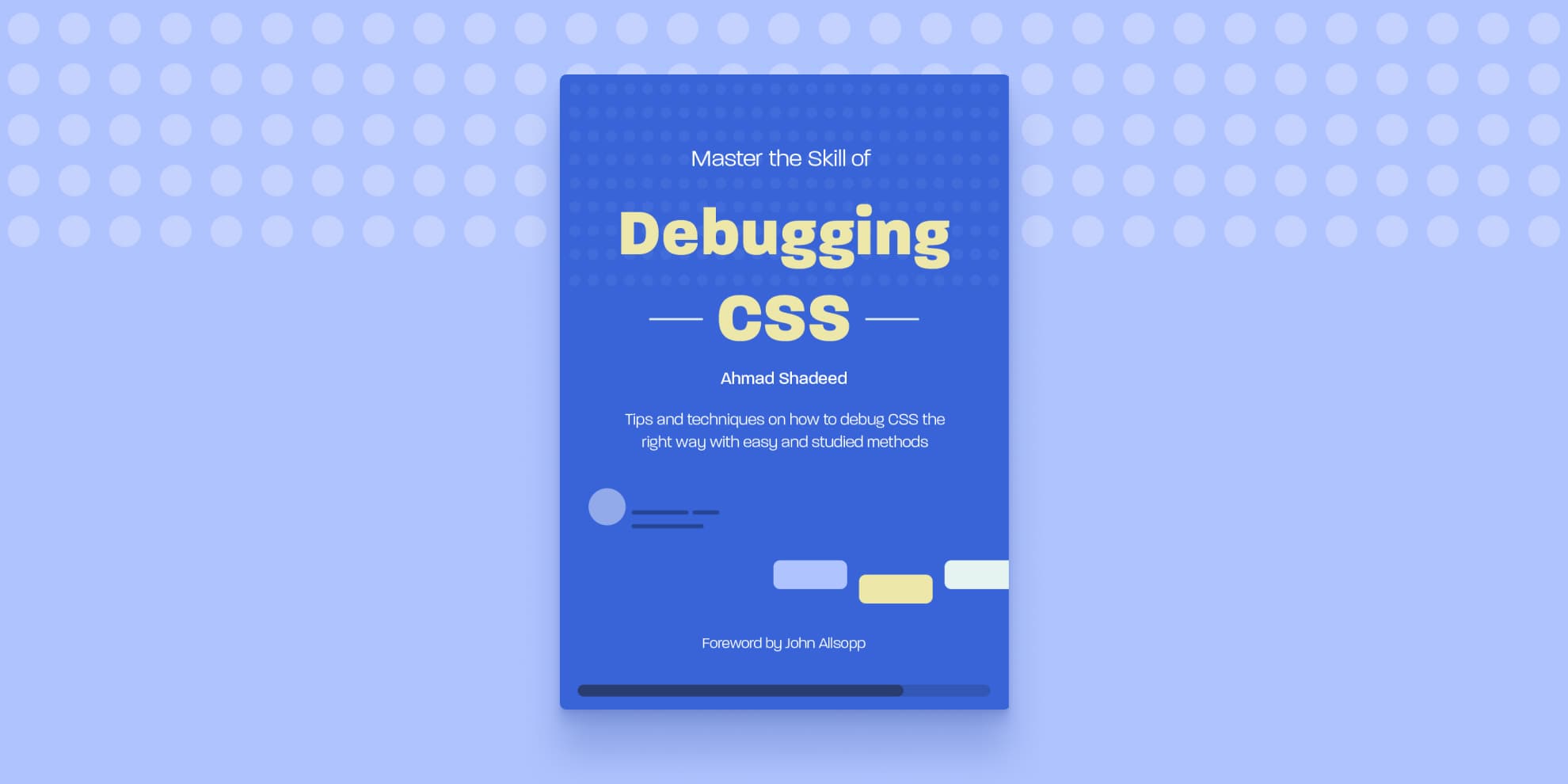Also available in: Français
You might already know Ahmad for all his sharing within the web community. He published a book about Debugging CSS that will help beginners but also more advanced developers finding out and resolving bugs. All of that in a well illustrated and structured digital book.
About Ahmad Shadeed

He writes extensively on CSS, Accessibility and RTL (right to left) text styling. You can find his website at ishadeed.com and he is also the creator of a11ymatters.com and rtlstyling.com, two specialized website for accessibility and Right-To-Left languages.
About Debugging CSS Book

This book wants to solve an global issue: misunderstanding or underrated power of CSS. It brings a new way to think of project, to see the issues you are encountered and, most importantly, the way to debug all of that thanks to well illustrated cases and one or several solutions.
The book starts with the history of CSS. Indeed, you can’t understand a language and the current new specifications, without going through its history.
You’ll then have a look at the existing tools to debug your CSS, but also how to better know your working environment.
Finally you’ll go though the core of the book: debugging. You’ll be guided via different facettes: a list of CSS properties that usually lead to common bugs ; ways to break intentionally your layout to help you debug things ; a list of browser bugs, because sometimes it’s not your code’s fault ; and finally some generic trips and tricks.
You can find the complete presentation on the official website, and buy this book to start becoming a CSS bug killer.
Who can read this Debugging CSS Book?
Well. Do you know the known bias named Curse of Knowledge? It’s hard for me to defined what kind of people could/should read this book, but as I currently work with beginners and advanced front-end developer, I have only one statement coming in mind: people don’t know CSS.
It’s really rare to find someone who knows the basic and history of CSS: floating, stacking context, block formatting context, broswer painting, animation and transition, margin collapsing, box-model, etc.
We are not even talking of advanced CSS here, only the basis of understanding it and its specificities. If those terms are blurry to you, no worries, that’s common, you are not alone, but know that you are ready to read this book 😊 That’s a good news.
I’ll try to sum-up things you could learn depending on your level:
- Beginners: don’t hesitate, get this book, it’s made for you. Read it by scanning it first (read the first part completely, and the part about tools too) to understand its structure, then get back to the sections that will help you.
- Intermediate: jump on it too. You know a lot of things about CSS, but I can assure you that you will discover new things. It’s even more true if you are used to debugging a certain way, Ahmad will show you some new perspective here and there.
- Advanced: well, even if you are not the first target of this book, I think it worth the price. The illustrations will help you fine tune your understanding, and you will certainly learn 2 or 3 things here and there, helping sharpen your knowledge. It can also help you with sharing your knowledge as well if you write blog post, books or if you teach.
As you can see, depending on your level, you will get different kind of benefits from reading this book.
Don’t hesitate to come back to this article to comment and share with us your own reading experience and what you’ve learned. You can also find me on Twitter to discuss about it.
Good reading! 😊




Post a comment for this article?
Follow comments and trackbacks